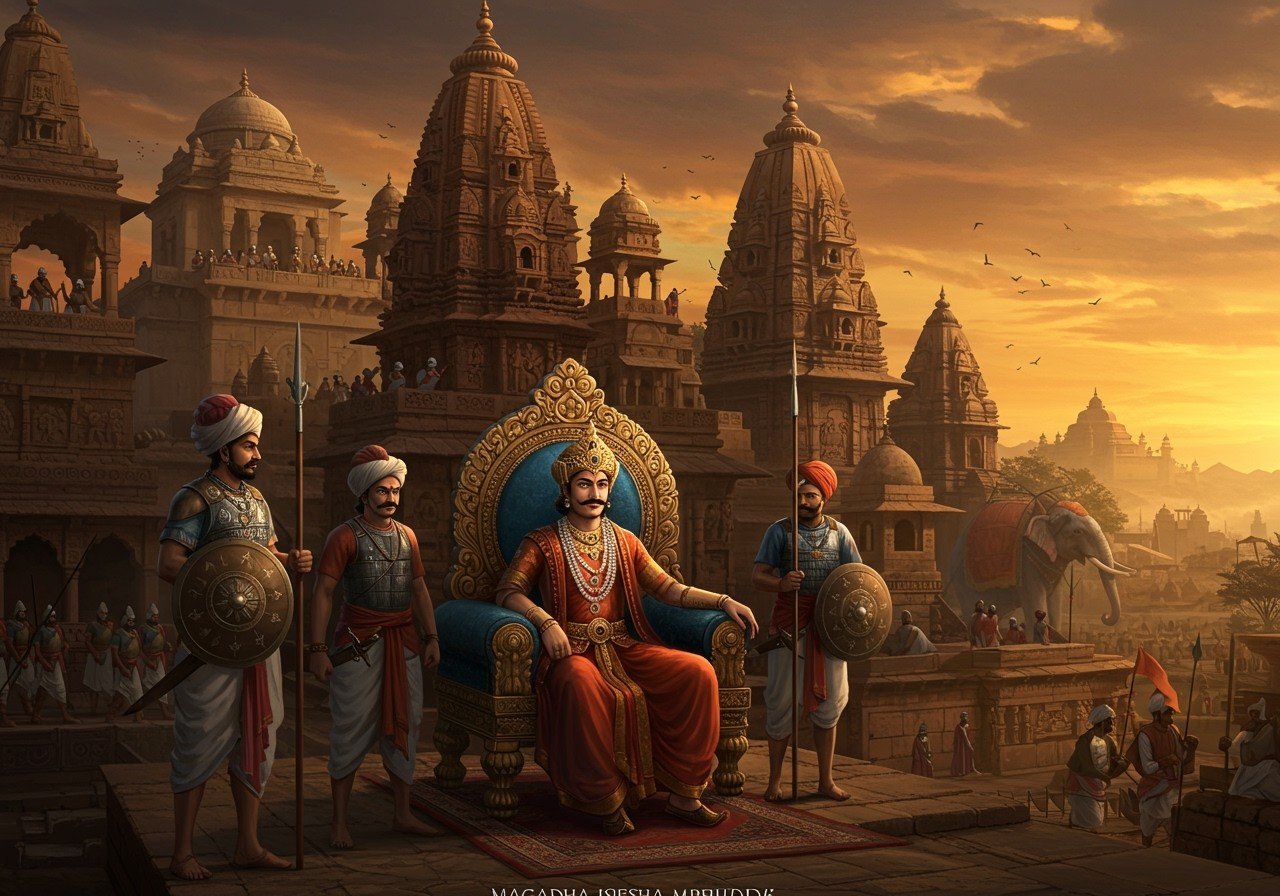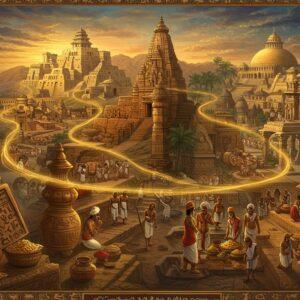
The Haryanka Dynasty, a pivotal chapter in ancient Indian history, laid the groundwork for the rise of the Magadha kingdom. This blog post delves into the dynasty’s origins, reign, and timeline, offering a glimpse into its substantial influence on India’s cultural and historical landscape. By exploring the legacy of the Haryanka rulers, we gain a deeper appreciation for the intricate historical tapestry that has shaped modern India.
Who Founded the Haryanka Dynasty?
Bimbisara founded the Haryanka Dynasty around 544 BCE. His reign marked a significant era in Indian history. As the first prominent ruler, Bimbisara expanded his kingdom through strategic alliances and matrimonial ties, including his marriage to the sister of the Kosala king, which solidified Magadha’s power.
Bimbisara was a visionary leader. He implemented crucial administrative reforms, enhancing governance, and extended his patronage to Buddhism, establishing a robust foundation for his successors. Rajgir, the capital, held strategic importance, contributing to a period of stability and prosperity for Magadha.
Haryanka Dynasty Rulers
The Haryanka Dynasty boasted several notable rulers. Ajatashatru, Bimbisara’s son, is renowned for his military conquests and territorial expansion. He successfully led conflicts against neighboring states like Kosala and Vaishali, and played a key role in developing Pataliputra (modern-day Patna) into a prominent city.
Later rulers, such as Udayin, continued to bolster Magadha’s strength despite internal conflicts. Udayin’s strategic foresight led him to move the capital from Rajagriha to Pataliputra. However, the dynasty’s later period was marred by assassinations and internal strife, culminating in the end of Haryanka rule with Nagadasaka around 413 BCE.
These rulers made significant contributions to the cultural and political landscape of ancient India.
Haryanka Dynasty Timeline (544 BCE – 413 BCE)
The Haryanka Dynasty’s reign spanned from approximately 544 BCE to 413 BCE. Key events include Bimbisara’s ascension to the throne in 544 BCE and Ajatashatru’s conquests. Bimbisara’s rule saw the establishment of efficient governance structures.
Ajatashatru’s reign, from 492 BCE to 460 BCE, was marked by significant battles and treaties that shaped Magadha’s history. His transition of power involved patricide and the consolidation of authority.
The dynasty’s decline was precipitated by internal strife and the subsequent rise of the Shishunaga Dynasty. Despite its eventual downfall, the Haryanka Dynasty laid the foundation for future dynasties in the region.
Cultural and Religious Contributions
The Haryanka Dynasty made substantial cultural and religious contributions. Bimbisara’s patronage of Buddhism and his close ties with Gautama Buddha fostered the construction of important religious sites.
Ajatashatru also supported Buddhism and played a role in the first Buddhist council held at Rajgir, contributing to the spread of Buddhist teachings. Jainism also thrived during this period, marked by interactions between Haryanka rulers and Jain monks. Architectural advancements, including fortifications and urban planning in Rajgir and Pataliputra, stand as notable achievements.
Perform Sacred Rituals with Authentic Items from Poojn.in
As we delve into the rich history of the Haryanka Dynasty and ancient India, Poojn.in provides the perfect opportunity to connect with your spiritual heritage. We offer a wide selection of authentic puja items for your rituals and ceremonies:
- Pure copper and brass items: Elevate your daily puja rituals with handcrafted items designed to enhance your spiritual practice. Discover our collection of copper and brass puja items.
- Traditional dhoop and agarbatti: Create a sacred atmosphere with our range of traditional incense, perfect for ceremonies and daily prayers. Explore our selection of dhoop and agarbatti.
- Authentic rudraksha malas and spiritual jewelry: Enhance your spiritual journey with genuine rudraksha malas and jewelry, crafted with care and imbued with positive energy. Find your perfect rudraksha mala or spiritual jewelry.
Conclusion
The Haryanka Dynasty remains a significant chapter in ancient Indian history. From Bimbisara’s founding to Ajatashatru’s expansion and fortification of Magadha, their reigns were defined by strategic alliances, military achievements, and administrative reforms that paved the way for future rulers. The dynasty’s support of Buddhism and Jainism, coupled with architectural advancements and urban development, left an enduring mark on India’s cultural and religious landscape. Though the dynasty eventually met its end, its legacy continues to inspire and inform our understanding of India’s rich heritage.


